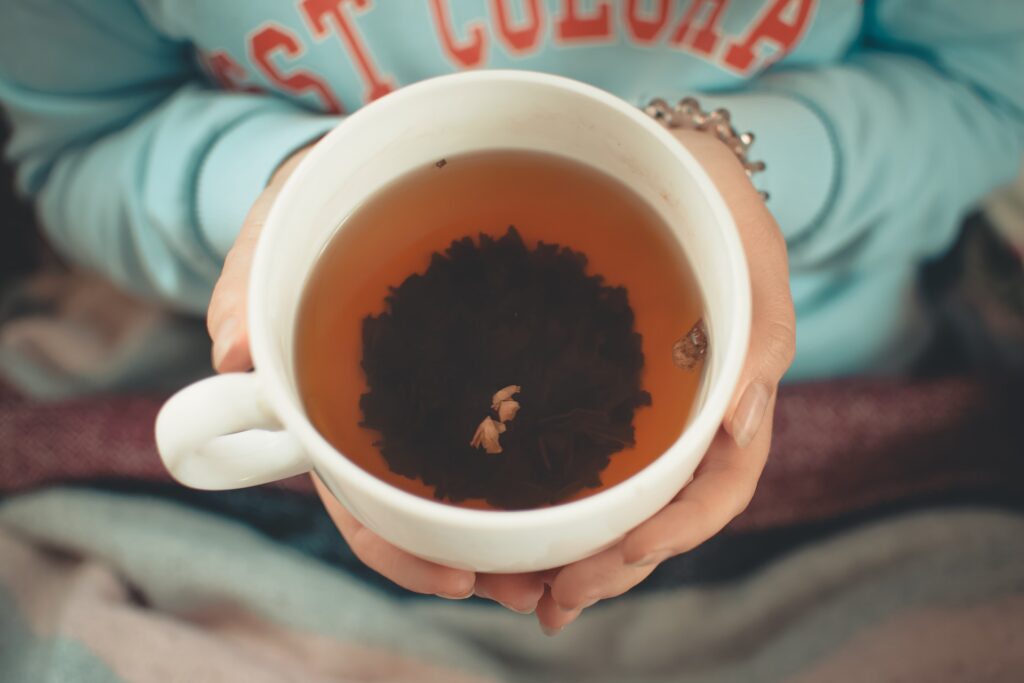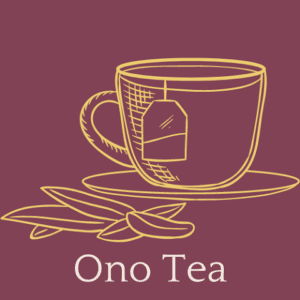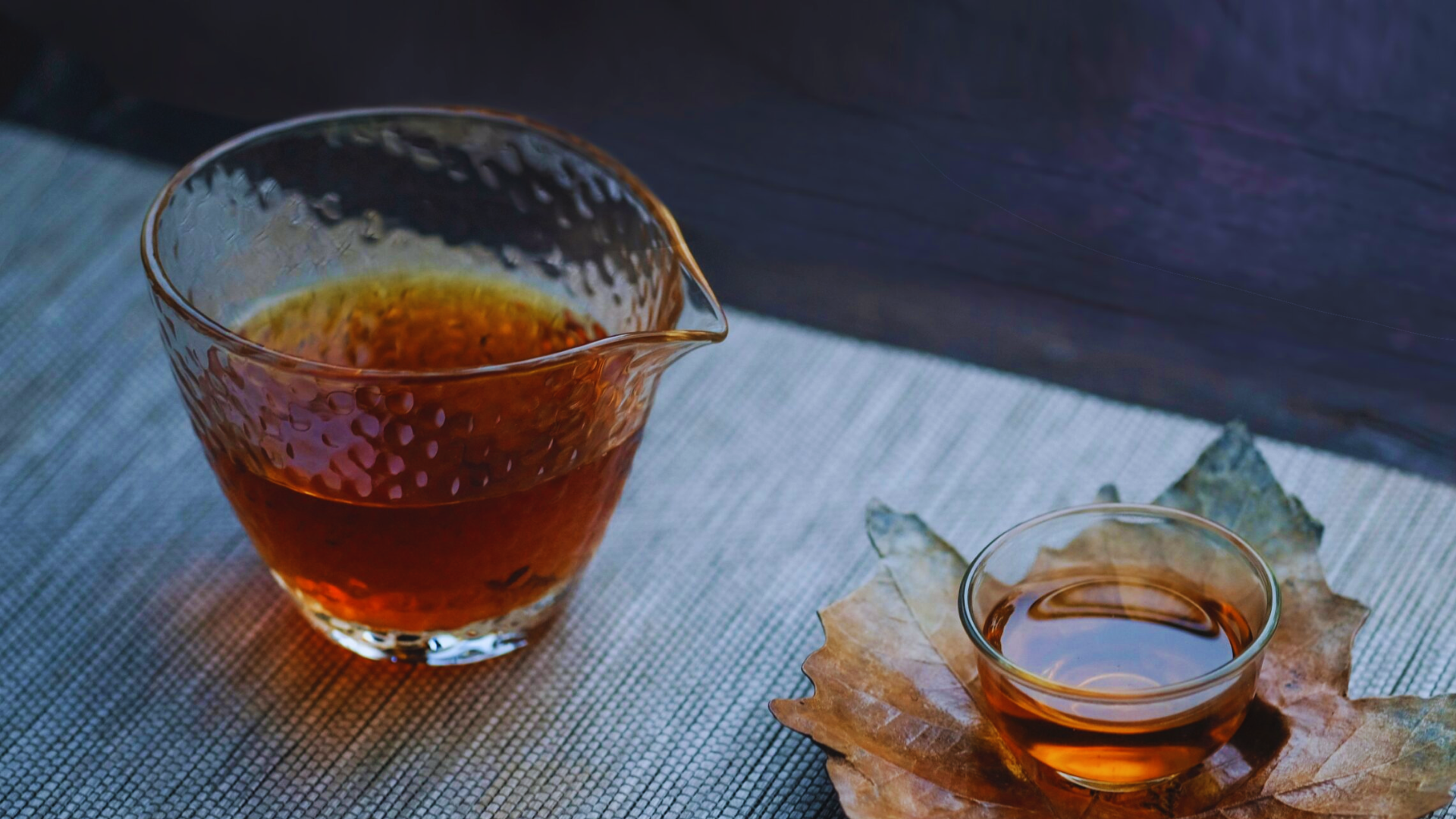The popularity of Oolong tea has soared recently, all thanks to its flavor and beneficial antioxidants, among other potential health benefits. However, like green tea or black tea, Oolong contains caffeine. This can be a problem if you are caffeine-sensitive. Decaf Oolong tea solves this problem. So, what is decaf Oolong tea?
Decaf Oolong tea is one that has undergone a decaffeination process, reducing the caffeine content. On average, decaf Oolong tea contains 1–10 mg per 8-ounce serving. The caffeine content varies depending on factors such as decaffeination methods, tea leaf sizes, and processing conditions.
This article details this Oolong tea type, the decaffeination methods, and much more. Read it to the end to find out.

Decaffeination Methods
Exposing Moistened Tea Leaves to Carbon Dioxide
The tea is decaffeinated by exposing moistened tea leaves to pressurized carbon dioxide, with the gas acting as a solvent. Caffeinated CO2 gas is passed through activated charcoal filters, separating and collecting the caffeine.
From there, the gas is depressurized back, leaving decaffeinated Oolong tea. The tea retains its exceptional aroma and taste after this process.
Swiss Water Process
Also known as the water process, this caffeine extraction uses only water to decaffeinate the tea leaves. It involves soaking the tea leaves in hot water and subsequent caffeine extraction. The caffeinated water is then passed through activated charcoal filters to remove the caffeine. After that, the tea leaves are dried to make decaffeinated Oolong tea.
Methylene Chloride Extraction
This method uses methylene chloride as a solvent to remove the caffeine. The tea leaves are soaked in water, and methylene chloride is added. After extraction, the tea leaves are rinsed to remove the solvent residue and dried for decaf tea.
Ethyl Acetate Rinsing
The producers use ethyl acetate as a solvent in this extraction method. This solvent is a natural fruit or fermented product’s by-product. In this process, the tea leaves are steamed, opening the pores, and then thoroughly rinsed using the solvent to remove caffeine.
In a nutshell, decaffeinated Oolong tea is a type that has undergone any of the above processes. The YouTube video below summarizes the explanation.
Potential Health Benefits of Decaf Oolong Tea
Oolong tea has several potential health benefits. The following are some of them:
- Antioxidant properties: Like other Oolong teas, decaf tea has strong antioxidant properties. Catechins, thearubigins, and theaflavins are some of the antioxidants. These antioxidants may reduce the risk of cancer, improve heart health, and boost immunity. Besides, they may improve skin health and protect against neurodegenerative diseases.
- Weight management: Decaffeinated Oolong tea may also help with weight management. This health benefit comes from the brew’s capability to increase metabolism, promote fat burning, and reduce appetite. It also comes from its ability to improve insulin sensitivity.
- Lowering the risk of high blood pressure: This Oolong tea may also reduce the risk of developing hypertension
. Decaffeinated Oolong tea lowers the risk of diabetes by relaxing the blood vessels. Besides, IoT has compounds that enhance nitric oxide production, which contributes to lowering your blood pressure.
- Sleep quality improvement: Decaf Oolong tea may also improve sleep quality thanks to its low caffeine content and amino acid L-theanine. It does so by reducing stress and anxiety, leading to better sleep quality. Besides, it contains flavonoids that can reduce inflammation, which leads to snoring, which can affect your sleep quality.
However, it is worth noting that consuming more than four cups of decaffeinated Oolong tea every day may cause side effects such as:
- Jitteriness
- Stomach discomfort
- Bloating
- Headaches
- Nausea
- Vomiting
- Palpitations
How to Brew Decaf Oolong Tea
Brewing decaffeinated Oolong tea is straightforward. You will start by choosing high-quality decaf loose-leaf tea or tea bags. From there, you will follow these steps:
- Measure the tea: You will measure the tea leaves or bags depending on the decaf Oolong tea you prepare. A teaspoonful per cup will be ideal for a cup of tea if you use loose-leaf tea. If you use tea bags, one will be enough for a cup.
- Heat your water: Boil clean, filtered water to 180°F or 200 °F. It’d be best to use a temperature-controlled kettle or a thermometer to know the exact temperature. Without both, you will boil and cool the water for about two minutes.
- Pre-warm your teaware: Then pre-warm your teapot and cup using warm water. This process helps maintain the temperature of the tea. After prewarming, discard the water before adding decaffeinated tea or a tea bag.
- Steep: Add hot water to the tea leaves or bag, then allow it to steep for about five minutes. The duration will vary depending on your preference.
- Remove the tea bag or tea leaves and serve: After steeping, you will remove the tea leaves or tea bags and serve. You can enjoy the hot tea as it is or add sweeteners like honey. Another option is iced Oolong tea, to which you can add lemon. Milk is yet another option that you can use to make a tea latte.
Conclusion
Oolong tea is undoubtedly popular, thanks to its flavor and beneficial antioxidants. However, it contains caffeine, which can be a problem if you are caffeine-sensitive. That’s where decaf Oolong comes in—a type of Oolong that is caffeine-free or contains minimal content. This article has covered what decaffeinated Oolong tea is and the decaffeination methods. Use this information as you buy your decaf tea today.

